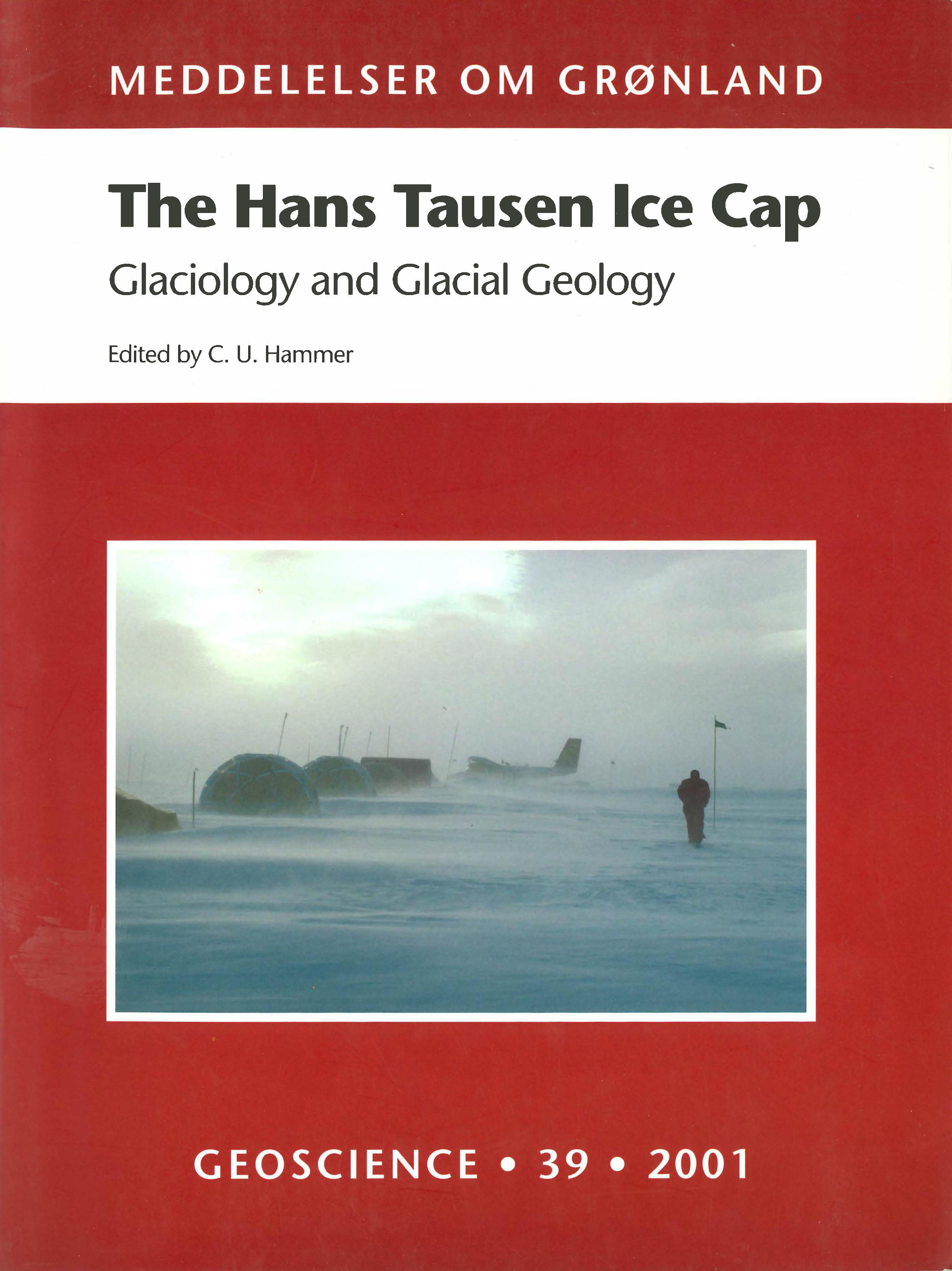Microparticles, soil derived chemical components and sea salt in the Hans Tausen Ice Cap ice core from Peary Land, North Greenland
DOI:
https://doi.org/10.7146/moggeosci.v39i.140228Abstract
Selected segments of the 344 m deep ice core from Hans Tausen ice cap in Peary Land, North Greenland have been stratigraphically analyzed for chemical impurities and insoluble microparticles (Dust). Two different components of the microparticles have been identified by their different size distributions: A component of small particles from remote sources, and a component of large particles from local sources. The abundance of large particles increases with depth (and age) in the ice core resulting in an increase in total dust mass. Very high dust mass in the lowest 100 m of the core are believed to be a result of meltwater run-off. Compared to Central Greenland ice cores the Hans Tausen ice is strongly enriched in soluble crustal material from local sources manifested by high concentrations of Ca2+ and nss. Mg2+. In the bottom 100 m section our results indicate a loss of Ca2+ and Mg2+ relative to dust due to melt water runoff. Sea salt concentrations show little variation with depth, and our results indicate, that the sea salt in Hans Tausen ice is from remote sources. The North Polar Sea has not been a significant source of sea salt in the life time of the Hans Tausen ice cap. All our results are consistent with the hypothesis that the Hans Tausen ice cap was formed sometime during the Holocene: It started as a small ice cap of superimposed ice with heavy melting and strong influence of local dust sources. With time the ice cap grew, both horizontally and vertically, the surface got colder with less melting and the influence from local sources got weaker. Today the impurity content of Hans Tausen snow is comparable to that of the Central Greenland ice sheet with the exception of the influence of soluble crustal material from the ice free Peary Land area which remains.
Downloads
Published
How to Cite
Issue
Section
License
Coypyright by the authors and the Commision for Scientific Research in Greenland / Danish Polar Center. No parts of the publications may be reproduced in any form without the written permission by the copyright owners.


